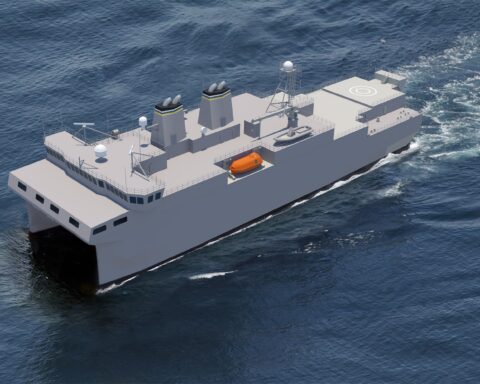The following is the Dec. 7, 2023, Congressional Research Service report, FY2023 National Defense Authorization Act: Overview of Funding Authorizations..
From the report
The National Defense Authorization Act (NDAA) is policy legislation typically introduced and reported each year by the House and Senate Committees on Armed Services (also known as the House Armed Services Committee, or HASC, and the Senate Armed Services Committee, or SASC). The act primarily sets policy and authorizes appropriations for activities of the U.S. Department of Defense (DOD) and national security programs of the U.S. Department of Energy (DOE). Fiscal Year (FY) 2023 marked the 62nd consecutive year for which Congress enacted an annual defense authorization.
On March 28, 2022, President Joseph R. Biden submitted to Congress a budget request for FY2023 that included $827.0 billion for national defense-related activities, including discretionary and mandatory programs. Of that amount, $802.4 billion fell within the scope of the National Defense Authorization Act for Fiscal Year 2023 (FY2023 NDAA; H.R. 7900; S. 4543; H.R. 7776; P.L. 117-263), with $772.5 billion for DOD activities, $29.5 billion for DOE activities, and $0.4 billion for other defense-related activities. The requested amount within the scope of the FY2023 NDAA was $34.2 billion (4.4%) more than the FY2022 authorized amount.
On July 14, 2022, the House passed a version of the NDAA (H.R. 7900) that would have authorized $839.3 billion—$37 billion (4.6%) more than the President’s request. On July 18, 2022, the SASC reported a version of the bill (S. 4543) that would have authorized $846.9 billion—$44.5 billion (5.6%) more than the President’s request. On December 23, 2022, President Biden signed into law the FY2023 NDAA, which authorized $847.3 billion—$45.0 billion (5.6%) more than the request.
The FY2023 NDAA authorized more funding than the President requested for most DOD appropriation titles, with $18.9 billion more—the largest increase of any title, in terms of dollar amount—for procurement programs (e.g., Navy ships and aircraft, Air Force aircraft; Army missiles and tracked vehicles, among other programs). Among the programs for which Congress authorized additional funding were DDG-51 Arleigh Burke-class destroyer, Patriot air and missile defense system, and F-35 fighter aircraft. The legislation authorized $1.9 billion less funding than requested for military personnel (e.g., pay and allowances), driven in part by Army recruiting shortfalls. The legislation supported a 4.6% military pay raise, in line with the formula in law.
Following Russia’s renewed invasion of Ukraine in February 2022, the FY2023 NDAA authorized funding for activities in support of the European Deterrence Initiative (EDI), including $800 million for the Ukraine Security Assistance Initiative, through which DOD provides lethal equipment and other support to the Ukrainian military and security forces. The legislation also authorized $11.5 billion for activities in support of the Pacific Deterrence Initiative (PDI), an effort intended to strengthen U.S. defense posture in the Indo-Pacific region, primarily west of the International Date Line.
Among the issues debated by one or both chambers during consideration of the bill but not included in the enacted version were provisions that would have repealed military abortion restrictions.
This report compares authorizations for major defense appropriations titles, programs, and policy matters in the Biden Administration’s FY2023 budget request, House-passed and SASC-reported versions of the FY2023 NDAA, and enacted legislation. This report also provides references to other CRS reports that provide in-depth analysis and contextual information on certain defense and foreign policy issues.
Download the document here.





